432hz Precise Temprament in Arturia Pigments 5 Debate Around, Benefits & More
Introduction
Although music has a remarkable power to evoke strong emotions in us, did you realize that the way a piece is tuned can also affect our response to it? Let us investigate how to use the intriguing idea of 432Hz exact temperament in the music production program of 432hz precise temprament in arturia pigments 5.
A distinct experience can be had by tuning music to 432Hz instead of the conventional 440Hz tune. Many people think that 432Hz has a more calming effect and resonates more naturally with nature, which makes it feel more peaceful to the ear. It simply feels right, much like the difference between sitting in an uncomfortable chair and one that fits you wonderfully.
432Hz tuning is a simple experiment with Arturia Pigments 5, a potent digital tool for music production. You may now create music that utilizes this specific frequency without the need for specialized equipment thanks to this program, which gives you the ability to precisely modify the tuning of your sounds.
Using Arturia Pigments 5’s 432Hz tuning opens up new creative possibilities for you and your audience. This unique auditory experience is thought to encourage a greater sense of relaxation and connection to the music.
432hz Precise Temprament in Arturia Pigments 5
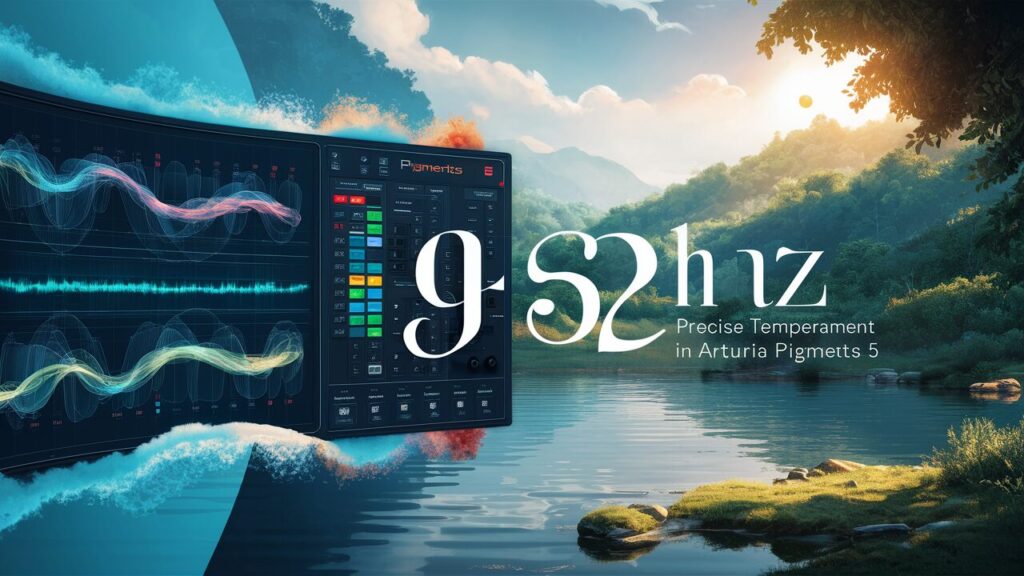
This tutorial will explain 432Hz tuning and show you how to use it with Pigments 5. We will talk about the kinds of songs that work well with this tuning, why some musicians are drawn to it, and how to set it up in your projects.
This tutorial contains essential information for all levels of experience in music creation, from beginners to seasoned artists.
Let us get started and discover the special charm of 432Hz tuning!
432hz precise temperament in arturia pigments 5: Understanding
In Arturia Pigments 5, the A note above middle C vibrates at 432Hz instead of the usual 440Hz when tuned to 432Hz. Supporters of this tuning contend that 432Hz is more in tune with universal frequencies and may thus enhance wellbeing, mental clarity, and ease of relaxing. Many people think that this frequency produces a more calming and pleasant listening experience than 440Hz.
The Debate Around 432Hz Tuning
Although 440Hz has been the generally acknowledged norm in Western music since the middle of the 20th century, there is still discussion over the possible advantages of 432Hz tuning. Proponents contend that 432Hz establishes a stronger connection with the listener because it resonates more naturally with the body and surroundings. Many musicians are drawn to 432Hz because of its unique and fulfilling properties, despite the debate surrounding it.
Advantages of Tuning to 432Hz
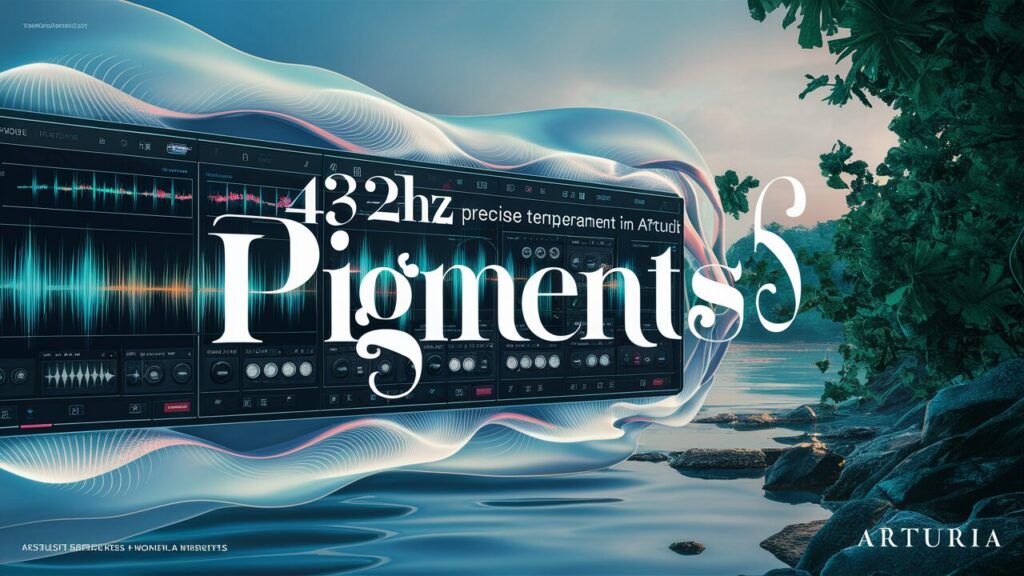
Deeper Emotional Connection: Because 432Hz music tends to sound more immersive and vibrant, it is frequently believed to elicit greater emotional reactions.
Improved Listening Experience: Music at 432 Hz has been shown to have a relaxing impact and increase overall pleasure of sound. Many listeners report feeling more at ease and balanced after listening to it.
Natural Harmonic Resonance: It is thought that by tuning in, the sounds would resonantly resonate with Earth’s natural frequencies, producing a more pleasant and gentler aural experience.
To explore these possible benefits, try experimenting with a new acoustic experience by setting your music in Pigments 5 to 432Hz
What is 432hz and Why Does it Matter?
Compared to the typical 440Hz tuning found in most current music, some listeners find the distinctive 432Hz tuning to be more pleasant and natural. This explains why 432Hz has been attracting interest:
It’s frequently characterized as more tranquil and peaceful.
Some people think it blends in better with nature.
It could encourage calmness and lessen tension.
Music set at 432Hz sounds crisper and more balanced to some ears.
If 432 Hz music were a meal, it may be similar to tasting something that feels exactly appropriate for your body. It might not be miraculous, but it could improve your entire experience and satisfaction.
A Brief Overview of Arturia Pigments
In the crowded field of synthesizers, Arturia Pigments stands out for a number of strong reasons. Users may effortlessly merge wavetable synthesis and virtual analog thanks to its dual-engine architecture, which offers a broad spectrum of audio textures. With its user-friendly interface and strong modulation features, it has grown to be a favorite of both novice and seasoned producers.
Pigments’ real-time visual feedback is one of its primary characteristics. The program makes it simple for users to interact with sound creation without being intimidated by complicated controls by displaying waveforms and modulation effects in a plain and intuitive manner.
Why Arturia Pigments?
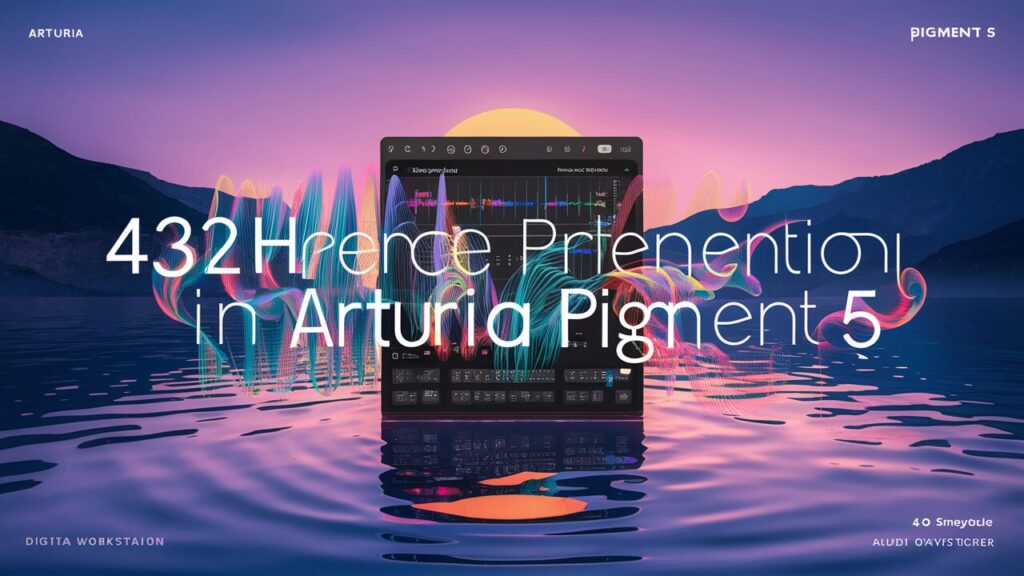
In the crowded field of synthesizers, Arturia Pigments stands out for a number of strong reasons. Users may effortlessly merge wavetable synthesis and virtual analog thanks to its dual-engine architecture, which offers a broad spectrum of audio textures. With its user-friendly interface and strong modulation features, it has grown to be a favorite of both novice and seasoned producers.
Pigments’ real-time visual feedback is one of its primary characteristics. The program makes it simple for users to interact with sound creation without being intimidated by complicated controls by displaying waveforms and modulation effects in a plain and intuitive manner.
440hz vs 432hz: What’s the Big Deal?
Why these two tuning frequencies are the subject of so much discussion may be of interest to you. Let us make it simpler:
440Hz:
The majority of modern music is tuned to this standard.
Most instruments are calibrated to this tuning because it has long been the standard.
Its sound is frequently described as being more vibrant and upbeat.
432Hz:
We are investigating an alternative tuning like this.
Its pitch is somewhat lower than 440 Hz.
It sounds warmer and more organic, according to its supporters.
This is a brief analogy:
Aspect 440Hz 432Hz
Feeling More Radiant, Warmer EnergyGreater vigor and ease
For most music, use Standard.Growingly well-liked in alternative and therapeutic music
While some musicians and listeners continue with the comfortable sound of 440Hz, others passionately favor 432Hz, claiming it resonates more with them. It is similar to picking your favorite ice cream flavor in that some people are passionate about one option while others prefer both!
Features and Capabilities
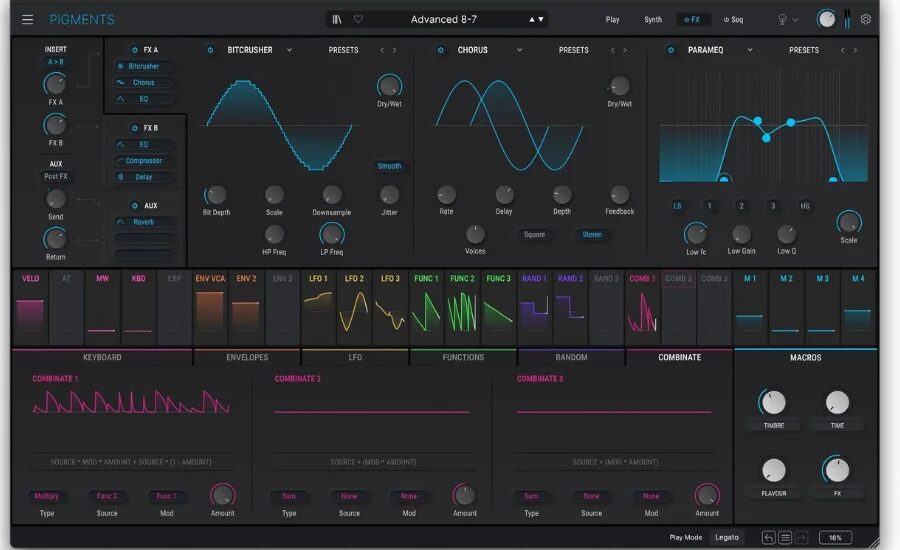
There are a ton of features in Arturia Colors that are intended to satisfy various sound design requirements. Users may create rich and intricate soundscapes by layering various sound genres using its twin synthesis engines. It is an all-in-one tool for creating both traditional and experimental music, with a wide range of built-in effects, real-time visual feedback, and an extensive set of modulation choices.
Colors has an easy-to-use interface and robust features that let you explore endless musical possibilities, whether you’re creating complex lead synths or ambient soundscapes. Alternative tunings are one especially fascinating field, with 432Hz being a notable choice for anyone looking to broaden their musical horizons.
Getting to Know Arturia Pigments 5
Let us examine the tool in more detail before learning how to use 432Hz: Five Arturia Pigments. This potent music program has multiple noteworthy features and is intended for sound composition.
Versatile Sound Design: You have a great deal of creative freedom to create almost any sound you can imagine.
Easy adjusting Changes: By simply adjusting to 432Hz, you may explore with this uncommon frequency rather easily.
User-Friendly Interface: This program is straightforward to use and does not require technical expertise, making it accessible to all users.
Variety of Effects: Pigments 5 has an abundance of captivating effects that can deepen and improve your audio.
Consider Pigments 5 as a giant LEGO-style toolbox for audio. Everything from straightforward sounds to complex compositions can be created. The finest aspect? It encourages you to experiment with other tunings, such as the 432Hz tuning that we are focusing on today.
Benefits of Using Arturia Pigments
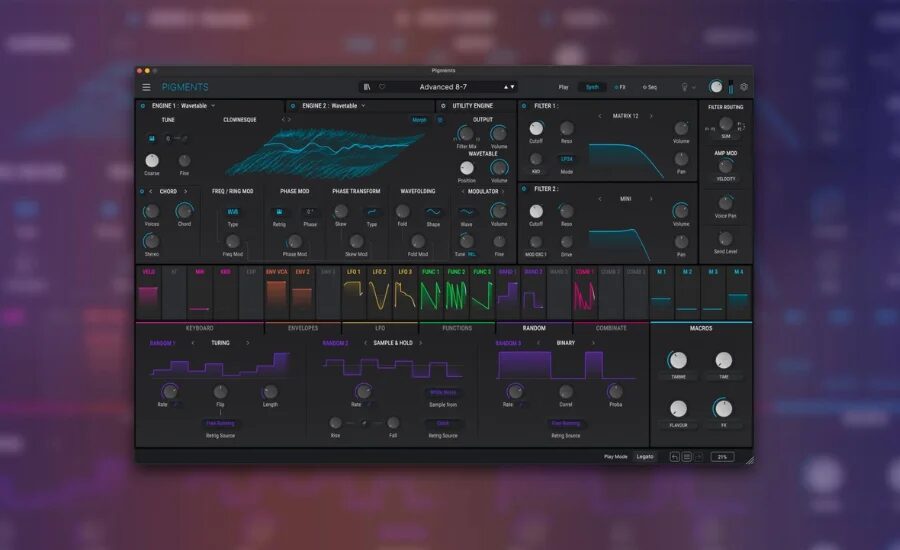
The richness and adaptability of Arturia Colors are what give them their real strength. Users may experiment with many synthesis techniques at the same time, offering an unmatched variety of options for sound design. Its versatility includes accurate parameter adjustment, which makes it a perfect platform for anyone who wants to experiment with other tunings, such as 432Hz. Colors provides the tools you need to explore new musical horizons, whether you’re layering sounds or fine-tuning your compositions.
Exploring 432hz precise temperament in arturia pigments 5
Combining 432Hz with Additional Synthesizers:Even though Arturia Colors 5 is a strong and flexible synthesizer, you may improve your soundscape even more by broadening your sonic palette and setting other hardware and software synthesizers to 432Hz. By doing this, you can make sure that every instrument you own is in line with the 432Hz standard, which will make listening more seamless. Start by using calibration tools or directly modifying the tuning settings of your different synthesizers to do this. This coherence between the various synths enhances the overall harmony of your song by creating a cohesive auditory world. Furthermore, observe how various timbres and synthesis methods interact with your 432Hz tuning to make sure all the components in your mix work together harmoniously.
Using 432 Hz tuning for mixing and mastering:To preserve harmony and prevent discord, make sure that every component of your recording complies with the 432Hz tuning standard when mixing and mastering music. Make sure all of the instruments and tracks are in harmony with one another within the 432Hz framework by keeping a close eye on their tuning. Pay close attention to how the instruments work together, especially in terms of frequency blending and overlap. Make use of frequency analyzers and tuning tools to find and fix any possible imbalances or conflicts. Make that the final mix maintains the 432Hz tuning integrity and sounds good on a variety of playback platforms during the mastering process.
Using 432Hz Tuning Throughout Genres:From jazz and classical to techno and ambient, the 432 Hz tuning works well in many different musical genres. Every genre has a different interaction with 432Hz tuning, which affects your music’s overall effect, texture, and mood. For example, 432 Hz can improve the emotional resonance of atmospheric sounds in ambient and electronic genres. It could offer a unique tonal character in jazz and classical music, enhancing the depth of conventional works. You can better grasp how 432Hz tuning affects the character of your compositions and find the best uses for your creative goals by experimenting with it in a variety of stylistic contexts.
How to Set Up 432hz in Pigments 5: Step by Step
To find Tuning Settings, search for “Tuning Options” or “Global Settings.” Usually, a menu at the top of the screen contains this.
Pitch adjustment: 440 Hz should be displayed in the settings. Adjust the frequency to 432 Hz.
Choose Your Sound: Start with a simple sound, such as a synth or a piano.
Play Some Notes: To hear the sound, try pressing a few keys on your keyboard or clicking the keys that are displayed on the screen.
Conserve Your Preferences: To review your creation at a later time, do not forget to save it.
There you have it, then! You have successfully configured Pigments 5 to tune at 432 Hz. It is similar to fine-tuning a guitar, except that you click buttons rather than move pegs. Play around with your newly adjusted sound and enjoy!
Famous Songs and Artists Using 432hz
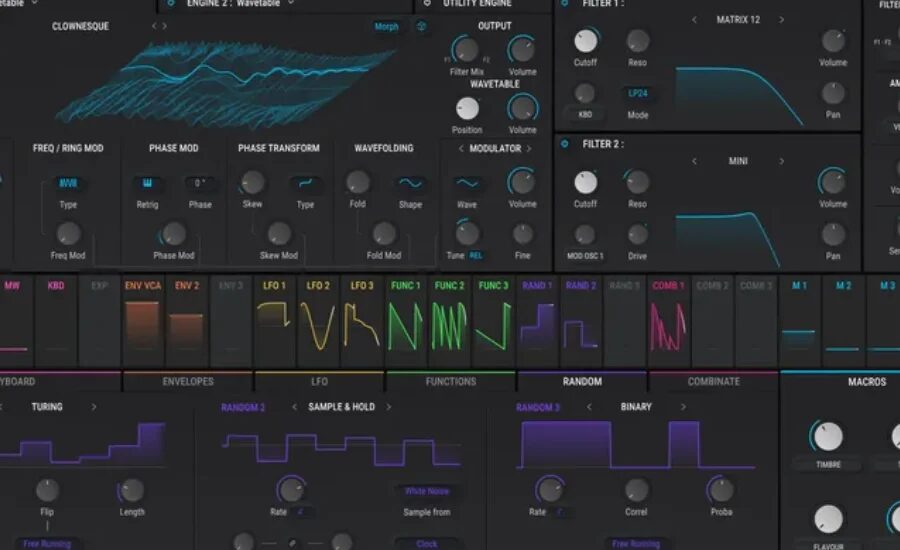
A few well-known musicians have experimented with 432Hz tuning, which may pique your interest. Here are some notable instances:
John Lennon’s “Imagine”: It’s been reported that certain renditions of this well-known song use 432Hz tuning.
Coldplay: In several of their songs, this band has experimented with other tunings, such as 432Hz.
Prince: Known for his daring musical taste, Prince used 432Hz in some of his albums.
It’s important to note that these performers weren’t always using 432Hz, and the assertions on particular songs can occasionally be disputed, but it does show how interested well-known musicians were in trying out other tuning techniques.
Advanced Methods for 432hz precise temperament in arturia pigments 5
Designing Unique Sources of Modulation:It’s crucial to investigate Arturia Pigments 5’s sophisticated modulation capabilities if you want to use its 432Hz tuning to produce complex and dynamic environments. To begin, play around with different modulation sources like envelopes and LFOs (low-frequency oscillators). With the help of these tools, you can gradually change settings like pitch and filter cutoff to give your sounds more depth and movement. You may create complex textures that change with time by experimenting with these modulation choices, which can improve your entire soundscape. These can provide movement and depth to your sounds by gradually altering parameters like pitch, filter cutoff, and effects. For example, a small amount of pitch modulation within the 432Hz framework might provide nuances to your soundscape. Modulation of the filter cutoff can also give your sound a distinctive character and add layers of intricacy to your compositions.
Making Use of Macro Controls:Arturia Pigments 5’s macro controls are effective instruments for controlling important factors that affect 432Hz tuning. You may precisely tune your 432Hz tuning across different aspects of your sound by assigning macros to important variables, such tuning adjustments. Furthermore, macros have the ability to manage microtonal alterations, which enables real-time modifications during sound creation sessions or live performances. This tool allows you to easily change your sounds, which improves both the performance and sound design processes. It also facilitates smooth transitions and creative control.
Using 432 Hz for automation and sequencing:One efficient method for controlling Arturia Pigments 5’s 432Hz tuning parameters is to integrate automation into your digital audio workstation (DAW). Automation can produce steady dynamic shifts, pitch shifts, and tweaks that draw attention to the 432Hz tuning in your song. One way to add movement and evolution to your music is to automate a pitch envelope so that tuning shifts over time. Furthermore, the 432Hz tuning may be complemented by using sequencers to add rhythmic patterns and microtonal variations. You can create intricate, evolving sequences that improve the overall sonic texture and give your songs a unique character.
Facts:
- Tuning Frequencies:
- 440Hz: Standard tuning for most modern music; described as vibrant and upbeat.
- 432Hz: Considered more calming and harmonious; believed to resonate with natural frequencies.
- Benefits of 432Hz:
- Enhanced emotional connection and immersion.
- Improved relaxation and listening pleasure.
- Resonance with Earth’s natural frequencies.
- Arturia Pigments 5:
- A versatile synthesizer with dual-engine architecture allowing for a wide range of sounds.
- Features real-time visual feedback, making sound creation accessible.
- Supports advanced modulation and macro controls for intricate sound design.
- Setting Up 432Hz:
- Adjust tuning settings in Pigments 5 from 440Hz to 432Hz.
- Play notes to experience the adjusted sound.
- Notable Artists:
- John Lennon, Coldplay, and Prince have experimented with 432Hz tuning in some of their works.
Summary:
The article explores the concept of tuning music to 432Hz using Arturia Pigments 5, a powerful music production software. It discusses the calming and natural effects associated with 432Hz tuning compared to the standard 440Hz. The piece explains how to set up 432Hz in Pigments 5, its benefits for emotional connection and listening experience, and the historical context of tuning debates. The article also highlights notable musicians who have used 432Hz and provides advanced techniques for utilizing this tuning effectively in music production.
FAQs:
1. What is 432Hz tuning?
- 432Hz tuning is a frequency believed to resonate more harmoniously with nature and promote relaxation compared to the standard 440Hz tuning.
2. How can I set up 432Hz tuning in Arturia Pigments 5?
- Access the tuning settings in Pigments 5 and adjust the pitch from 440Hz to 432Hz. Choose your sound and play notes to hear the difference.
3. What are the perceived benefits of using 432Hz tuning?
- Many listeners report a more immersive emotional experience, increased relaxation, and a more natural sound when listening to music tuned to 432Hz.
4. Can I use 432Hz tuning across different genres?
- Yes, 432Hz can be effectively used in various genres, enhancing emotional resonance in ambient, electronic, classical, and jazz music.
5. Are there any famous songs that use 432Hz tuning?
- Notable artists like John Lennon (in some renditions of “Imagine”) and Coldplay have experimented with 432Hz tuning in their music.
6. What are advanced techniques for using 432Hz in Pigments 5?
- Utilize modulation sources, macro controls, and automation to create dynamic changes and unique soundscapes while maintaining 432Hz tuning.
Read More Information About Anything visit Latest Rular .com






